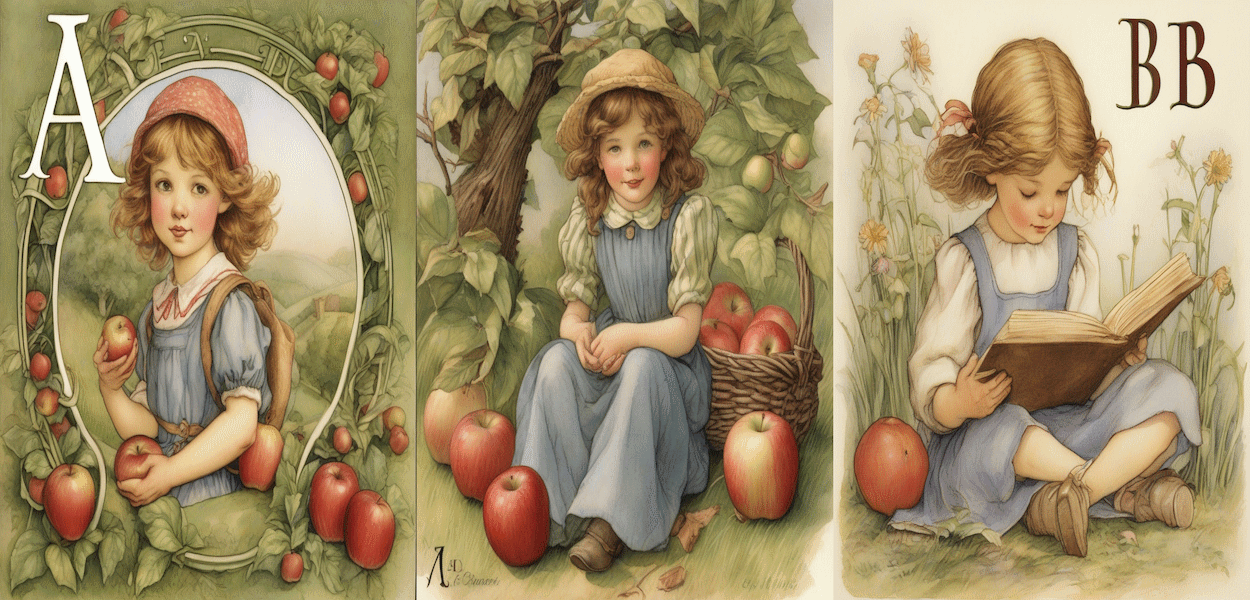Unlocking Language Fluency: 0-3 Year Olds in Canada, Powered by LearningTime.ca!
"Fluency bookmarks are a simple tool that students can use to reflect on their oral reading fluency and set specific goals for improvement."

First Published Nov 3, 2023
“The following text discusses the use of fluency bookmarks to track reading fluency goals and monitor progress in students. Fluency bookmarks are a simple tool that students can use to reflect on their oral reading fluency and set specific goals for improvement. The text suggests three ways to use fluency bookmarks: in 1:1 reading conferences or small groups, as part of a fluency coaching program using cold and hot reads, and in partner fluency activities. The text also provides tips and suggestions for using fluency bookmarks, such as setting achievable goals, promoting a growth mindset, and providing specific fluency goals.”
-LEX AI
But First, A Story Written By LEX AI
Written By LEX AI and SHiNER The HUMAN
Edited and Rewritten By Jasper AI
Grammar And Spelling and Canadianized By Grammarly
Unlocking Fluency: Emma's Journey to Becoming a Confident Reader
Once upon a time, in a quaint Canadian town, resided a curious and tenacious 3-year-old named Emma. Concerned about her fluency in reading, Emma's parents embarked on a quest to find valuable resources. Their search led them to the enchanting website called LearningTime.ca, brimming with tools to foster Emma's fluency skills.
Emma's parents discovered an interesting tool on the website called Fluency Bookmarks. These bookmarks were designed to help young children like Emma track their reading fluency goals and monitor their progress. Excited about this new tool, they decided to introduce it to Emma.
Every day, Emma would pick up one of her favorite books and sit down with her Fluency Bookmark. She would choose a specific area of fluency that she wanted to work on, such as reading faster or paying attention to punctuation. Emma would then set a goal for herself and write it on the bookmark.
With the Fluency Bookmark as her guide, Emma would read the book aloud, focusing on her chosen area of fluency. She would circle any parts where she needed to improve and make a mental note of them. At the end of each reading session, Emma would reflect on how well she did and assess her progress.
Emma's parents were amazed at her dedication and improvement. They could see how using the Fluency Bookmarks motivated Emma to practice and take ownership of her reading skills. They were proud of their little learner and how she embraced the learning process.
As time went on, Emma's reading fluency continued to improve. Her parents noticed that she was becoming more confident in her reading and was able to read with more expression and accuracy. The Fluency Bookmarks had truly made a difference in Emma's journey to becoming a fluent reader.
And so, with the help of the Fluency Bookmarks from LearningTime.ca, Emma continued to grow her reading skills. She went on to become a passionate reader, exploring new worlds and stories with ease and joy.
The end.
And now, on with our article...
How To Track Weekly Reading Fluency Goals with Fluency Bookmarks
Written By LEX AI and SHiNER The HUMAN
Edited and Rewritten By Jasper AI
Grammar And Spelling and Canadianized By Grammarly
Are you looking for a way to improve fluency skills and support students with their fluency goals?
Incorporating reading fluency goal setting and reflection as part of your daily or weekly routine is one way to do this. Setting goals helps your students build accountability and take ownership of the skills they are working on. It often motivates them to practice and provides a personal purpose for reading. Establishing reflection as a part of the learning cycle helps students look at their own reading and supports them in monitoring their own reading behaviours.
Keep reading to learn how to use simple fluency bookmarks to track reading fluency goals and monitor progress!

What are fluency bookmarks?
- To help your students monitor and reflect on their fluency, consider using fluency bookmarks.
- These "print and go" bookmarks are easy to integrate into your classroom instruction.
- They can help you integrate fluency interventions more effectively in your daily or weekly reading instruction.
To help your students monitor and reflect on their fluency, consider using fluency bookmarks. These “print and go” bookmarks are easy to integrate into your classroom instruction and can help you integrate fluency interventions more effectively in your daily or weekly reading instruction.
To complete the fluency bookmarks, students will read a text and circle an area of fluency they need or want to work on. On these lines, they can set a specific fluency goal for themselves. This bookmark can be used to remind students of what they are supposed to be working on and can serve as an accountability measure for fluency practice.

3 ways to use fluency bookmarks:
- 1:1 Reading Conferences or Small Groups
- Fluency Coaching Using Cold & Hot Reads
- Partner Fluency
Whether you choose to use them with reading conferences, small group reading, or with the whole class (individually or with partners), fluency bookmarks are a simple, yet effective, way to keep track of their fluency goals. There are many ways you can use this tool to track your students’ reading fluency goals.

1:1 Reading Conferences or Small Groups
Fluency bookmarks are perfect for 1:1 conferences or to use with your small groups. Students can reflect on their oral reading fluency at the end of a specific lesson, or they can reflect on their fluency each week as part of their weekly routine throughout the year. Students can set goals on Mondays and reflect on their fluency for the week on Fridays. If reading fluency is a bigger target for your students, they could even look at their bookmarks and reflect daily.
They could after each 1:1 or small group session set achievable goals for themselves. Since reading fluency is a skill that can be worked on in conjunction with other skills, even if the lesson target is unrelated to fluency (i.e., retelling, asking questions, key word summaries, making connections, non-fiction text structures, etc.), the bookmark can be used to reflect and set fluency goals throughout the year, especially since fluency is an ongoing reading skill that students can develop and improve. The bookmark can be used during small groups to remind the students of the goals they are working on, even if the focus is on a completely different skill.
Fluency Coaching Using Cold & Hot Reads:
- Fluency Coaching Using Cold & Hot Reads is a method of fluency practice where students engage in repeated readings of independent level passages.
- Students reflect on their fluency and set goals for themselves using fluency bookmarks.
- This method can be implemented during independent reading time or with books students read at home.

Use fluency bookmarks as part of your fluency coaching program. With cold and hot reads, you can have students complete repeated readings of independent level passages and reflect on their fluency. Each week, students can set a goal for themselves and record it on the fluency bookmark. They can then use this bookmark during independent reading time or with books they read at home.
Partner Fluency:
- Partner Fluency activities are a fun way to encourage ongoing fluency practice.
- Students can engage in partner poems, readers theatre, or reading passages together.
- Partner Fluency allows students to support and coach each other to improve specific reading goals.
If you’re looking for a fun way to introduce fluency practice or to encourage ongoing fluency practice, consider partner fluency activities. Pick a fun partner poem, reader theatre, or a reading passage.

In our experience, students make great coaches, and they love taking on the coach role to help other students pinpoint specific reading goals. Students love lifting each other up and helping each other out. This may require intentional pairing of partners and lots of modelling to provide students with a structure for HOW to coach. They would also need suggestions and practice with choosing KIND words to help with their constructive feedback. Perhaps a menu of canned comments would be helpful at first to ensure positive word choice and help students with choosing appropriate goals that match their observations and peer “critiques”. These predetermined observations and goals would be similar to canned comments for report cards that you may have for yourself.

TIPS & SUGGESTIONS FOR USING FLUENCY BOOKMARKS
Set achievable goals that students can reflect upon and feel success with. If the students’ goals are too far of reach, students may start to feel frustrated and could lose confidence in their ability to achieve their goals.
Remind students to keep a growth mindset for reading. Be sure your students understand “the power of yet” and that even if they can’t reach their goal this week, it just means they aren’t able to do it yet. It’s okay to have the same goal a few weeks in a row!
If the components of reading fluency are too vague for students, you may need to provide more specific fluency goals. Create a “menu” of smaller skills students can work on within the larger area of fluency. Some examples could be:
- "I will read 55 words per minute this week" (increasing it by only a few words at a time!)
- "I will improve my accuracy by 5%"
- "I will pay attention to punctuation on at least ONE page of my text"
- "I will try to change my voice for character dialogue within a text to practice my expression"
- "I will scoop my words into 2-3 word phrases for at least one page"
If students are having a hard time reflecting, consider recording their reading before/after or using auditory feedback phones (aka whisper phones). This helps them focus on their oral reading fluency and hopefully develop awareness of what others hear when they read.

For students who aren’t able to reach their specific goals, be sure to include extra opportunities for repeated reading or fluency practice.
Conclusion
In summary, fluency bookmarks are a valuable tool for tracking reading fluency goals and monitoring the progress of students. They can be used in 1:1 reading conferences, fluency coaching programs, and partner fluency activities. By setting achievable goals, reminding students to maintain a growth mindset, and providing specific fluency goals, teachers can help students reflect on their fluency and feel successful. Additional tools like recording readings or using auditory feedback phones can enhance students' awareness of their oral reading fluency. Incorporating fluency bookmarks into instruction fosters accountability, ownership, and meaningful progress toward fluency.
For more ways for young children to actively improve their Early Literacy Skills please check out our brief article: Early Reading Skills For Reading At Home
"Thanks For Reading!"
-SHiNER The HUMAN
and The AI Crew






Comments ()